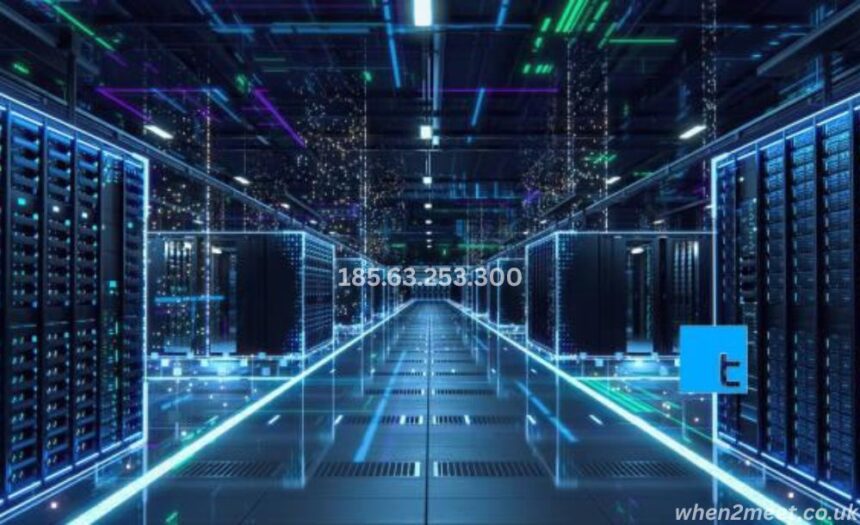The digital world thrives on numbers, and one number that has caught the attention of cybersecurity experts and tech enthusiasts alike is 185.63.253.300. At first glance, it may seem like just another IP address floating in the vast ocean of the internet. However, 185.63.253.300 is far from ordinary. Its unique structure, uncommon references in online forums, and growing curiosity surrounding it make this IP address one of the most talked-about digital phenomena in recent months.
The string 185.63.253.300 is often seen in technical logs, online searches, and even in discussions about internet safety and server performance. But why has this particular IP become such a focal point? Is it part of a broader network activity, or could it be a placeholder for deeper, more complex digital behavior? In this article, we will explore 15 critical insights related to 185.63.253.300, diving into its structure, implications, and the reasons why it’s stirring intrigue in 2025.
What Is an IP Address?
An IP address, or Internet Protocol address, is a unique string of numbers assigned to every device that connects to the internet. Think of it as the digital version of a home address it helps computers, smartphones, servers, and other devices find each other and communicate online. Just like your home address tells the post office where to deliver your mail, an IP address tells the internet where to send data like emails, websites, or files. Without IP addresses, information wouldn’t know where to go, and devices wouldn’t be able to connect with one another.
How Does an IP Address Work?
Whenever you browse a website, send an email, or watch a video online, your device sends out a request across the internet. This request includes your IP address so that the information you asked for like a webpage or video knows where to return. The server hosting that content sees your IP address and sends the data back to you.
Types of IP Addresses
There are two main types of IP addresses:
- IPv4: This is the original format and uses a 32-bit number (like 192.168.0.1). It allows for about 4.3 billion unique addresses.
- IPv6: This is the newer version with a 128-bit format (like 2001:0db8:85a3::8a2e:0370:7334). It was developed to support the growing number of internet-connected devices with trillions of possible addresses.
IPv4 vs. IPv6: Understanding the Difference
In the world of internet networking, IP addresses are essential for identifying and communicating between devices. Every device connected to the internet has an IP (Internet Protocol) address, and there are two main versions in use today: IPv4 and IPv6. Understanding the difference between IPv4 and IPv6 helps you appreciate how the internet functions and why upgrading is essential for the future.
Why Are IP Addresses Important?
IP addresses play a vital role in the internet’s structure. They enable websites to load, emails to reach their destination, and devices to stay connected in networks. Without them, the entire digital world would be disorganized and disconnected.
The Structural Anomaly of 185.63.253.300
One of the first things to note about 185.63.253.300 is its technical inconsistency. As an IPv4 address, each of the four segments (called octets) should range from 0 to 255. However, the last octet in 185.63.253.300 is “300”, which is invalid in standard IP address formatting. This irregularity has led many to speculate whether it is a simple typographical error, a placeholder, or part of a more complex scheme possibly for testing, fictional scenarios, or internal documentation purposes. Despite its invalid status, it continues to appear in various places, causing many to wonder whether there’s more to it than meets the eye.
Common Appearances of 185.63.253.300 in Cyber Discussions
Across cybersecurity forums, tech blogs, and even IT troubleshooting guides, It has made several appearances. Sometimes it is referenced in sample configuration files or used in educational content to demonstrate concepts. Other times, it shows up in logs from firewall alerts or error reports, especially in discussions around bot attacks or scanning activities. Its repeated use in this context suggests that might serve as a common stand-in address in various security-related topics. While it’s not technically operational, it plays a role in demonstrating potential vulnerabilities or network behaviors in simulated environments.
Could 185.63.253.300 Be a Placeholder?
Many believe that 185.63.253.300 is used as a placeholder similar to how “example.com” is used in web design and “John Doe” is used in legal documentation. In system administration guides, 185.63.253.300 might be inserted as a non-routable, non-functional example to represent a generic server address or simulate DNS queries. This use avoids the risk of accidentally referencing a live or sensitive server. Yet, the invalidity of the last octet ensures that it will never accidentally interfere with real systems. This makes it an effective tool in digital education, testing, and cybersecurity awareness.
Misuse and Confusion Around 185.63.253.300
Not all appearances of 185.63.253.300 are intentional. Due to its seemingly legitimate structure, inexperienced users or poorly configured systems may mistakenly use it in operational environments. This can lead to confusion or miscommunication between devices and servers, especially when dealing with automated network tools or scripts. When such issues occur, logs can flood with references to 185.63.253.300, leading some to believe it is associated with network attacks or software malfunctions. However, deeper investigation often reveals that it’s simply an invalid or misused placeholder address.
185.63.253.300 in Network Logs: Should You Be Concerned?
If you notice 185.63.253.300 in your server logs or network activity reports, there’s usually no reason to panic. In most cases, it appears as part of testing scripts, incorrect manual entries, or as output from teaching materials. Still, it’s important to verify that the presence of 185.63.253.300 isn’t masking any genuine security threat. A growing number of cybersecurity tools now automatically flag addresses like 185.63.253.300 to prevent misinterpretation and ensure that administrators stay focused on real threats instead of chasing down technical anomalies.
Educational Uses of 185.63.253.300
Because it is technically invalid yet recognizable, it has become a popular teaching aid. IT instructors and cybersecurity educators often use it to demonstrate what not to use as a valid IP address. Its repeated use in classrooms and tutorials highlights the importance of accuracy and vigilance in network configurations. Moreover, learners are trained to spot such anomalies, such as 185.63.253.300, and differentiate them from actual threats or valid addresses. In this way, it serves a valuable educational purpose.
Why 185.63.253.300 Still Matters in 2025
In 2025, the importance of digital hygiene and network literacy has grown more than ever before. In such a climate, even invalid IP addresses like 185.63.253.300 play a role in shaping how people learn about, interact with, and secure their online environments. The continued appearance of 185.63.253.300 in technical discussions also reflects the need for better digital awareness. It encourages users and professionals alike to be skeptical, curious, and analytical skills that are essential in today’s hyper connected world.
The Curious Psychology Behind 185.63.253.300
Another reason 185.63.253.300 remains intriguing is the psychological element of mystery. Humans are naturally drawn to patterns and inconsistencies, and when something like it breaks the expected rules, it captures attention. Whether in internet communities or hacker culture, such curiosities often take on lives of their own, developing reputations far beyond their original intent. In some corners of the internet, 185.63.253.300 is even referenced in memes or inside jokes, further cementing its place in the culture of tech-savvy communities.
Technical Lessons We Can Learn from 185.63.253.300
While 185.63.253.300 itself may not function as a valid IP address, it teaches us several valuable lessons. It reminds us of the importance of input validation, the consequences of minor errors in digital systems, and the strange ways in which the internet community assigns meaning to otherwise random data. Moreover, it demonstrates the need to critically evaluate all information in cybersecurity. Even something as harmless as it can be misunderstood without the right context.
Conclusion
At first glance, 185.63.253.300 might seem like a simple mistake or an accidental series of numbers. However, as we’ve uncovered throughout this exploration, it holds deeper significance within the worlds of cybersecurity, education, and digital culture. Though technically invalid as an IPv4 address, 185.63.253.300 is anything but irrelevant. It has become a symbol one that reminds us of the nuances within technology and the importance of staying informed, vigilant, and curious. Whether you are a seasoned IT professional or a curious learner, understanding anomalies like can sharpen your analytical skills and broaden your digital perspective. As we move deeper into the complexities of the internet age, even the smallest string of numbers can tell a big story.



